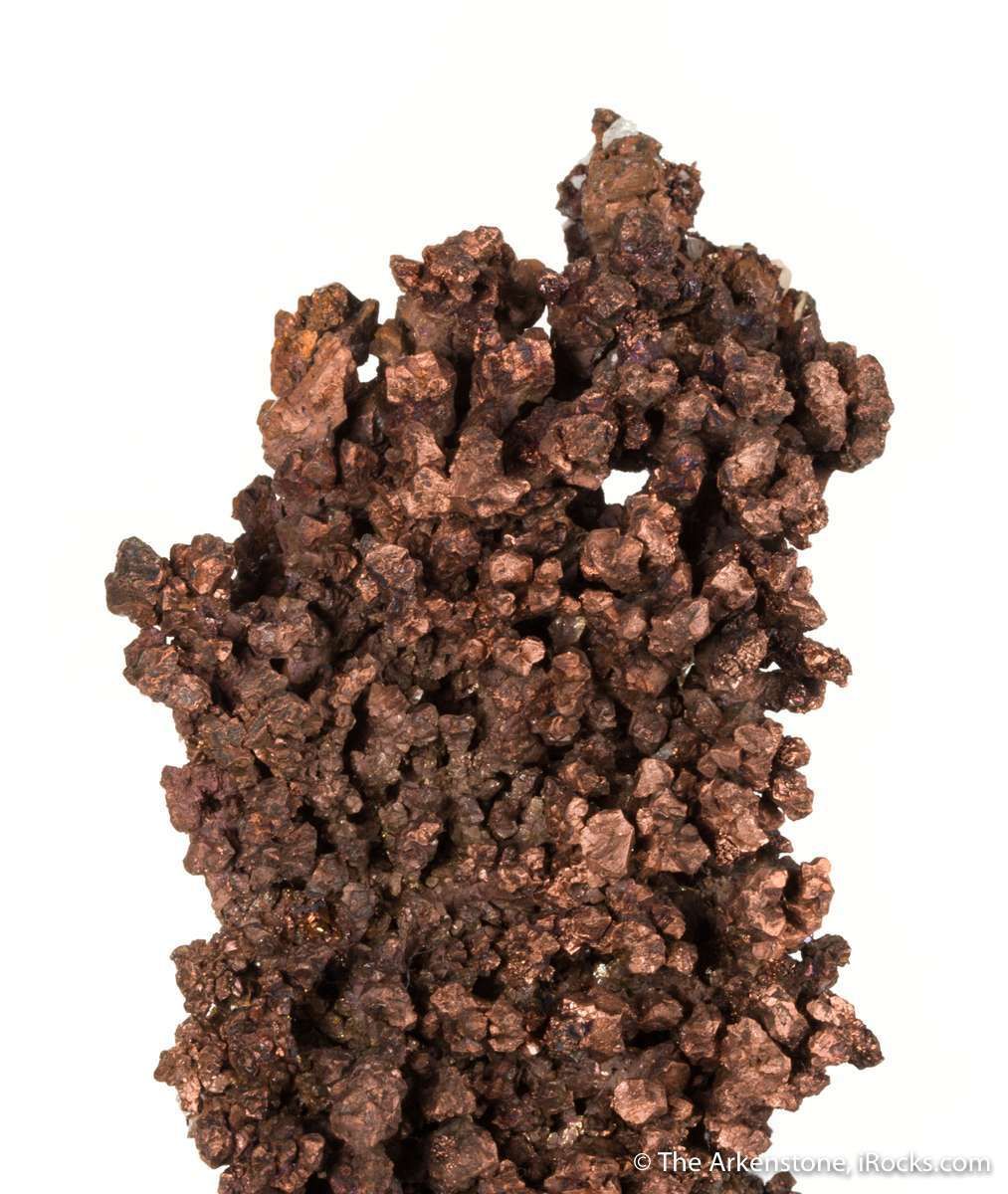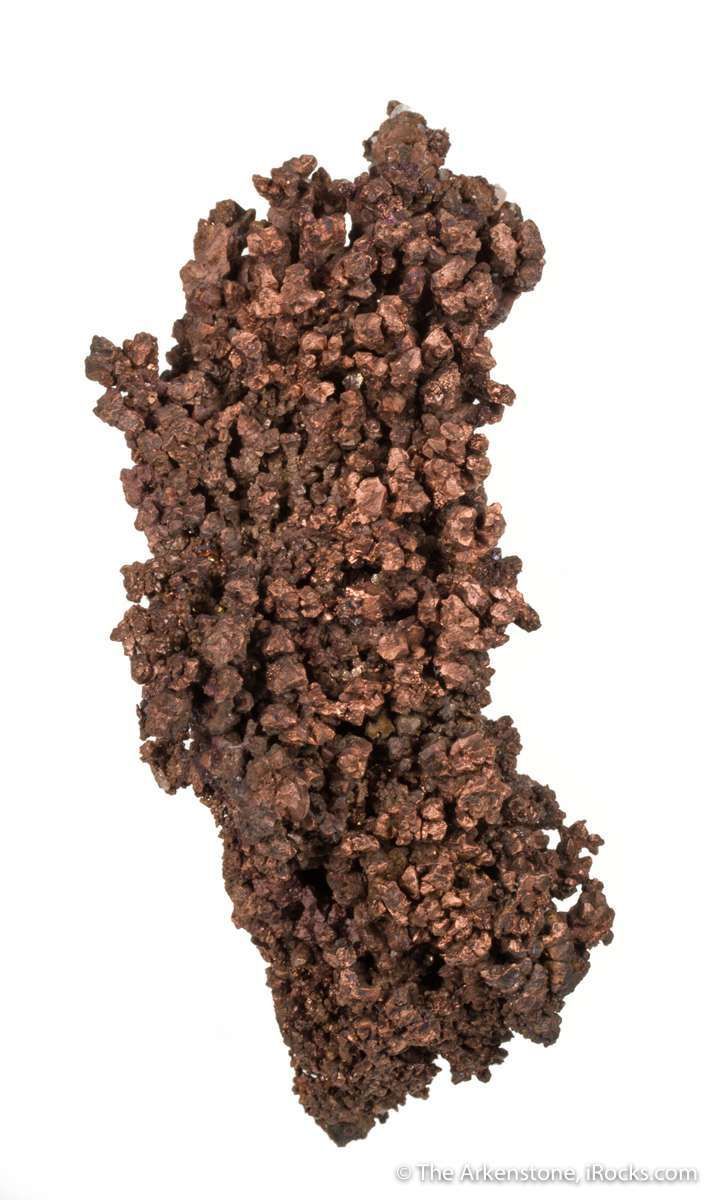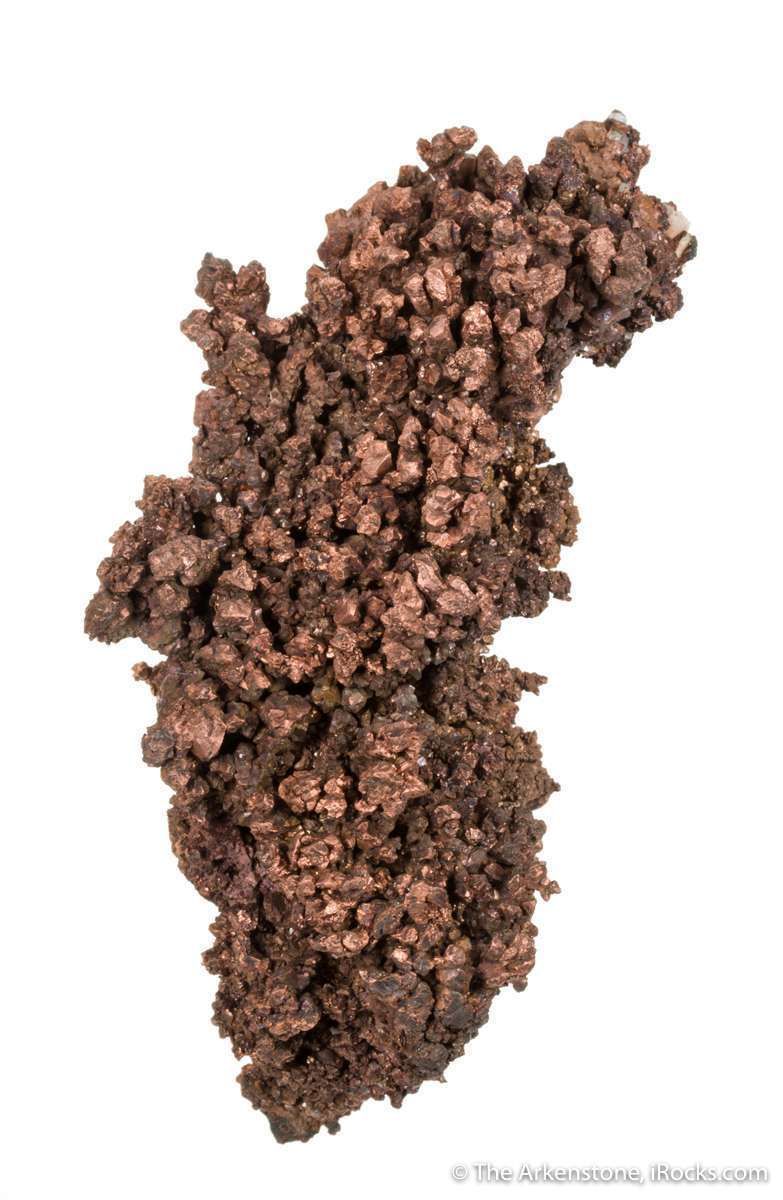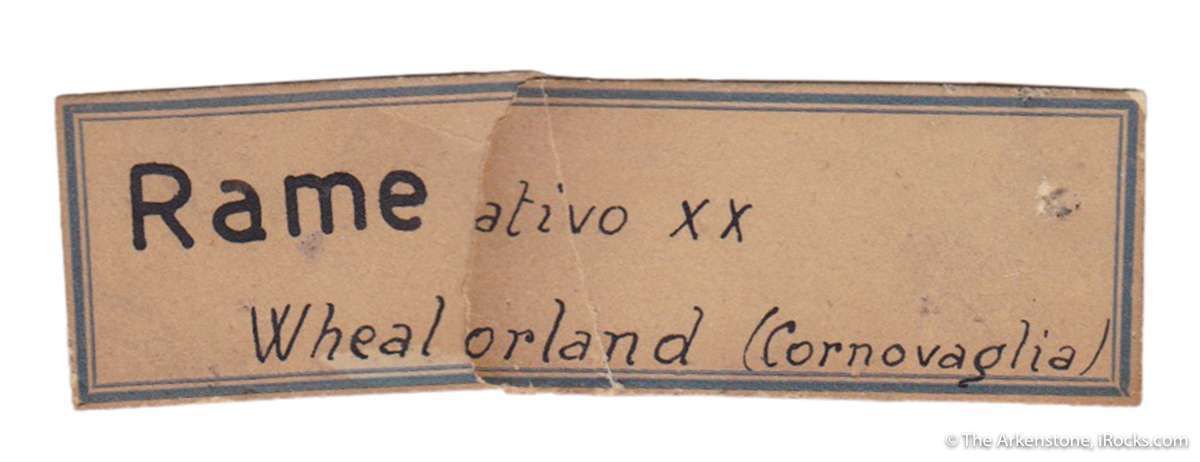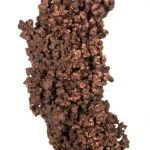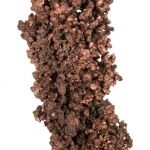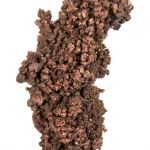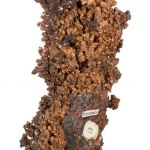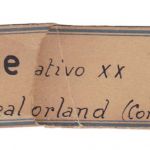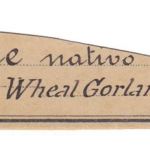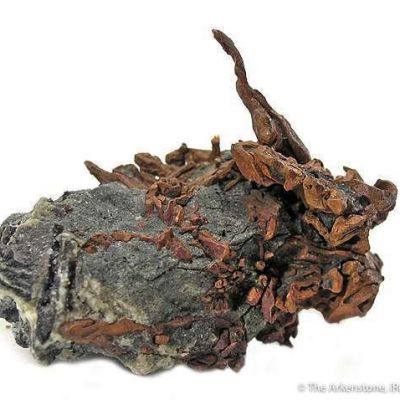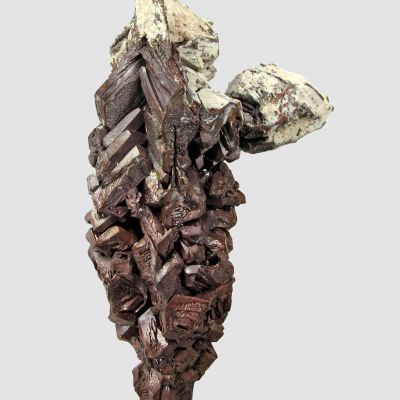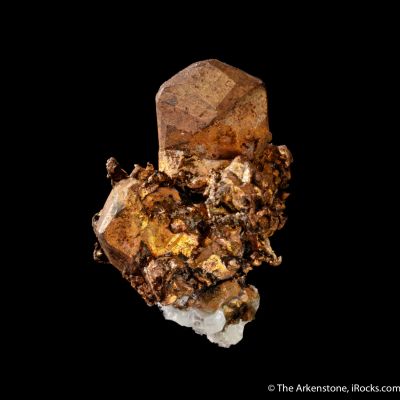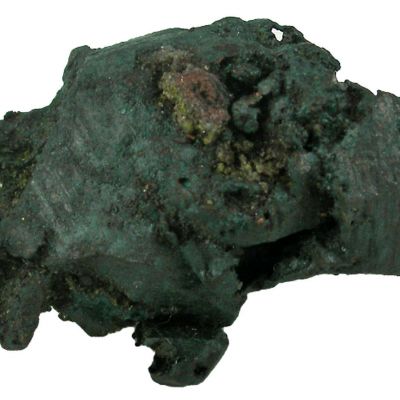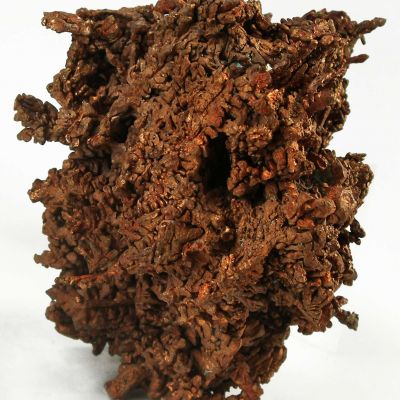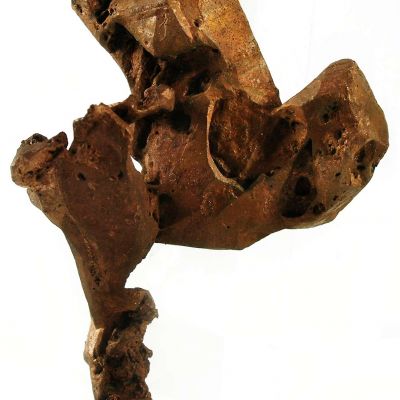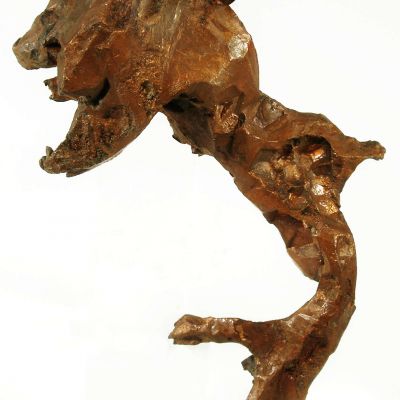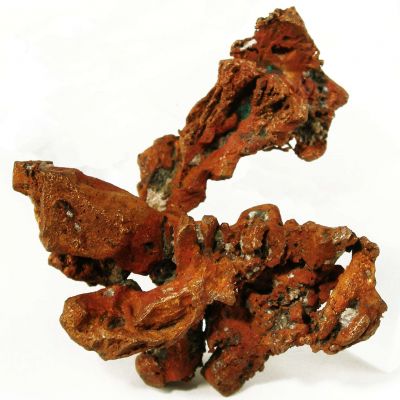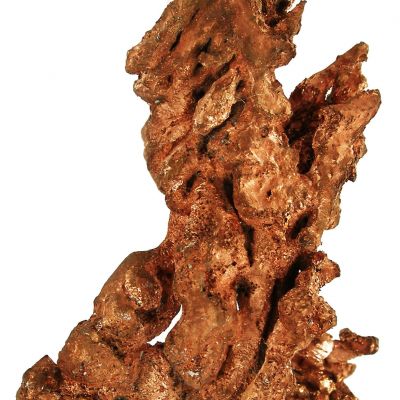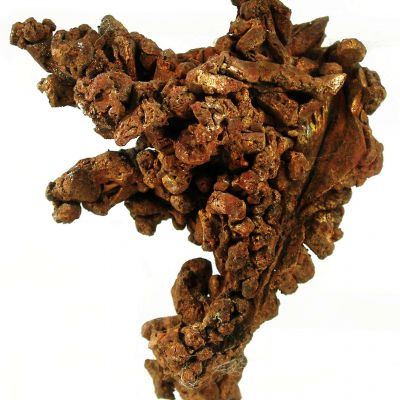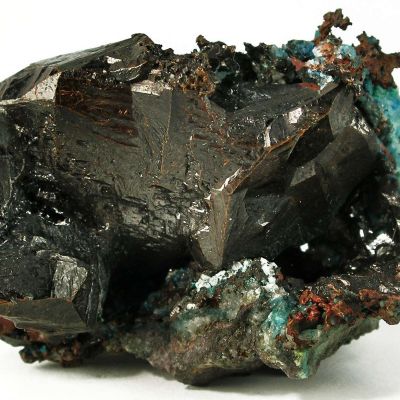- MIX17B-45
- Native Copper
- Wheal Gorland, St. Day, Gwennap, Cornwall, England, UK
- Cabinet, 12.0 x 4.9 x 4.4 cm
- Ex. Simon Lawrence; Philadelphia Academy of Natural Sciences
- $7,250.00 Payment Plan Available
Cornwall is of course one of the founding sites of the Industrial Revolution that shaped our world, and was productive of many ores including copper, but so few specimens have survived to the present time among what came out in the heyday. Among those underpopulated in the survivors is native copper, both because it was smelted when found, and because it was oddly rare in specimen form in Cornwall to begin with. Despite the wealth of copper ores, there seems to have been few formations of copper crystals, per se. This is similar to Tsumeb, in fact. Whereas mining districts like Michigan have mostly copper and silver and few secondary minerals, Cornwall is much more famous for its secondary minerals (and they are colorful, indeed!). So, for the collector, this makes a Cornish copper actually a paradox - harder to find and often more expensive than the incredible rare copper secondaries from here. These all date to the 1800s, or before. This is a particularly large specimen that is solid and hefty, composed of hundreds if not thousands of small crystals, some exhibiting hopper growth. While I cannot place the scrawled handwriting on the old labels, I have seen it before and perhaps somebody will recognize it. The word "Rame" is the old French word for copper, and this is surely from the mid to late 1800s. Formerly in the collection of the Philadelphia Academy of Sciences, then to Simon Lawrence when he bought that Cornish suite from the dealers who handled the collection (oddly, despite me making a higher bid for the collection, it sold to another dealer!). Simon is a well known Cornish resident and collector, who has assembled one of the finest collections of Cornish minerals today by buying other collections and keeping miniature and small cabinet pieces to array as a consistent suite. Thus, this is being sold because it is ironically too big for his suite of minerals, though it is of the quality otherwise. This copper specimen is significant, and beautiful for what it is. It is hefty, at 400 grams, or about a pound in weight.
